Grilling Tips
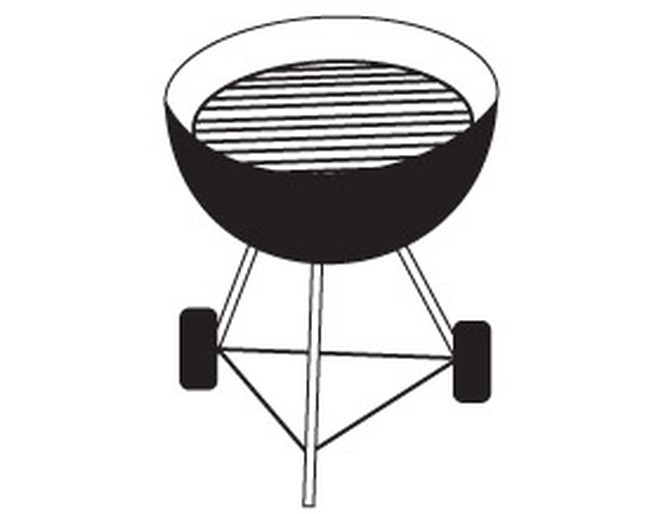
The Grill of My Dreams
- Gas grills can change the way you cook because they're so easy to use. Simply turn a switch and the propane jets ignite; 10 minutes later, set the food on the grid. Depending on the model, you may be able to adjust the temperature of different areas to precisely cook a variety of foods, and the grill also functions as a smoker. To be sure, a gas grill is a bit expensive, and you have to refill the propane tank from time to time. But if you like convenience, it is worth every cent.
- Kettle grills appeal to cooks who prefer the thrill of mastering fire to the convenience of turning a knob. Their round shape helps to conserve and intensify heat, and the fuel—typically charcoal—adds an unmistakable smoky flavor to food. Once you get the hang of banking the coals and tending the flames, you can cook great food on a kettle grill, but because the flames are hotter and less responsive than gas, you need to take pains to master the technique.
- Hibachi and other portable tabletop grills are fine for picnics and camping trips, but they are rudimentary and useful for only the very simplest grilling over direct heat.
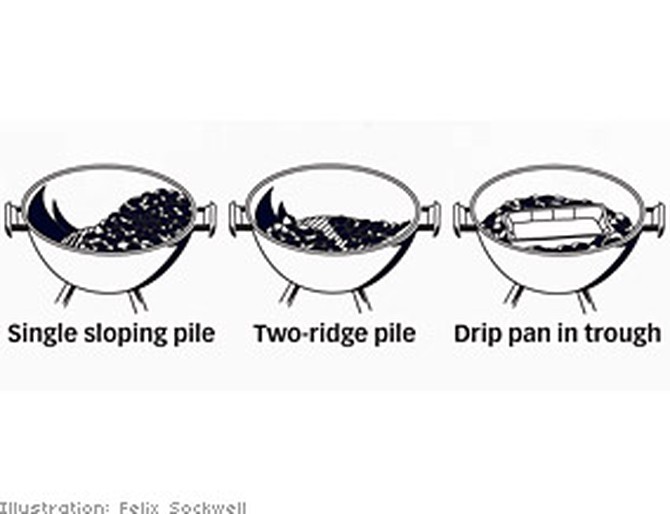
Coal Play
Ask any kettle-grill enthusiast: The secret to a great flame-cooked supper is learning to bank your coals once they're hot. Some people form them into two ridges, one higher than the other, with a trough down the middle. Others make a single sloping pile and leave the opposite edge clear. Either way, the point is to create hot, hotter, and hottest areas of the grill.
A steak that is cooking too quickly can be moved to a cooler zone; vegetables can be set over indirect heat. If you plan to roast something big like a butterflied leg of lamb on a covered grill, place a drip pan in the trough, and set your food over that.
A steak that is cooking too quickly can be moved to a cooler zone; vegetables can be set over indirect heat. If you plan to roast something big like a butterflied leg of lamb on a covered grill, place a drip pan in the trough, and set your food over that.
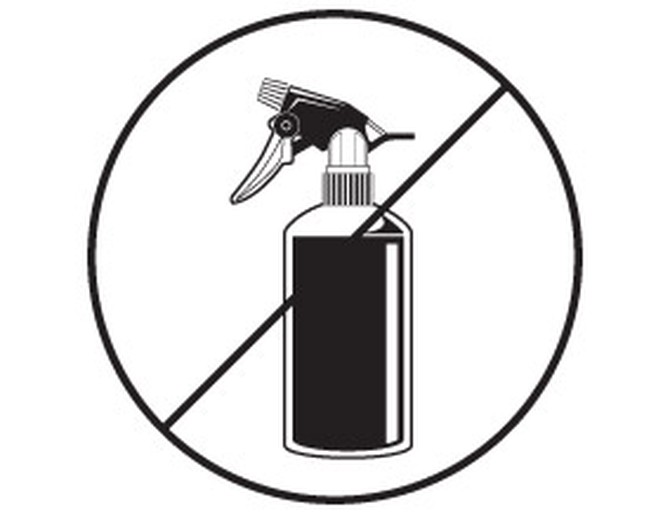
Should You Spritz?
Many grillers keep water spritzers nearby to douse flare-ups, but spraying your fire can make ashes scatter all over food. Instead, move food to a cooler zone and close the lid. This is especially important on a gas grill, which should never be sprayed with water.
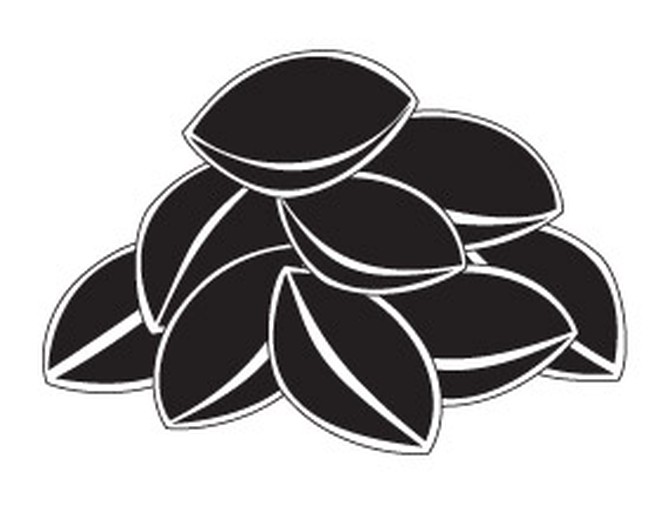
Where There's Smoke, There's Mesquite Chips
For kettle grillers, choosing the right fuel is essential—it determines the intensity of the heat as well as the taste of the smoke. Gas grillers have fewer fuel options but can use wood chips and herbs almost like a spice, to add layers of flavor to foods.
- Charcoal briquettes: They're popular with kettle grillers because their consistent size and density make them burn evenly, and because they're cheap. Connoisseurs don't like their smell, however, or the acrid taste they impart to food.
- Hardwood lump charcoal: They are pricier than briquettes, but chefs prefer them because they burn hotter and give off more fragrant smoke. They also make it easier to control cooking temperature, because they don't have those added burn accelerants.
- Wood: Most wood for grilling comes in the form of chips that can be scattered on top of a steadily burning charcoal or gas fire. Mesquite, cherry, hickory, maple, apple, pecan, and even grapevine cuttings are all good choices. Chips should be soaked in water first so they smolder and smoke, rather than burn up quickly.
- Herbs: You can toss onto your fire the woody parts of certain herbs—bay leaf, thyme, and rosemary stems, to name a few; like wood chips, these should be soaked in water first. You can also throw on lemon or orange rinds for flavor.
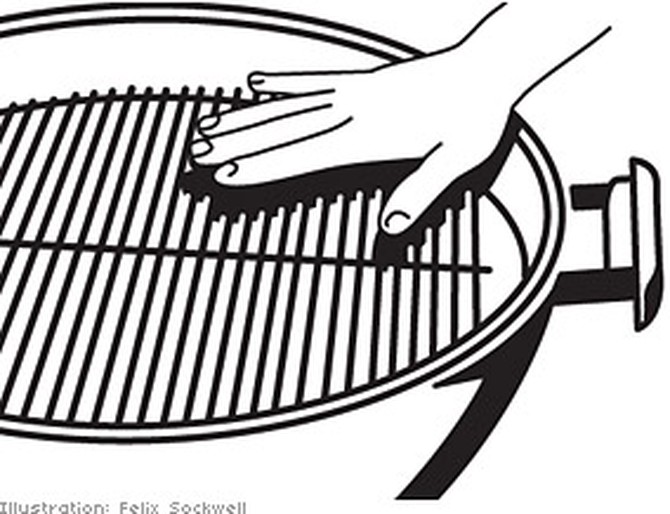
Feel the Heat
Don't look to the timer to tell when the grill is ready. Get in the habit of testing the heat before you add the food, and you'll become a better, more intuitive griller. Here's how:
- Hold your hand 6 inches above the coals. If you can stand the heat for only two seconds, the fire is hot and good for searing.
- If you can take it for three to four seconds, it's medium-hot, ready for grilling.
- If you can stand the heat for five seconds, the fire is medium and right for grilling heat-sensitive foods such as fish.
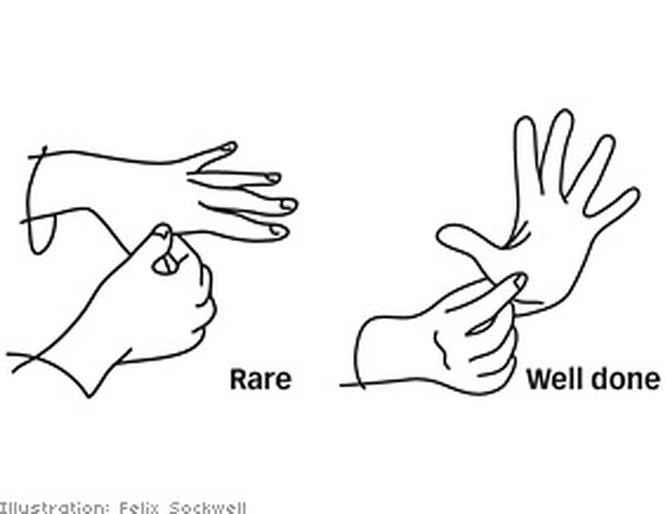
The Poke Test
When chefs want to test a steak for doneness, they don't stab it with a knife; they poke it with their finger. Meat gets firmer as it cooks, so they're assessing how squishy it is. You can get a feel for this by using your own hand.
Keep Reading: Top Barbecue and Grilling Tools
- Rare meat is as yielding as the flesh between your thumb and forefinger
- Move a half-inch toward your wrist and press again—that's medium rare.
- Well-done meat feels like the muscle at the base of your thumb when your palm is flat.
Keep Reading: Top Barbecue and Grilling Tools
From the June 2007 issue of O, The Oprah Magazine

